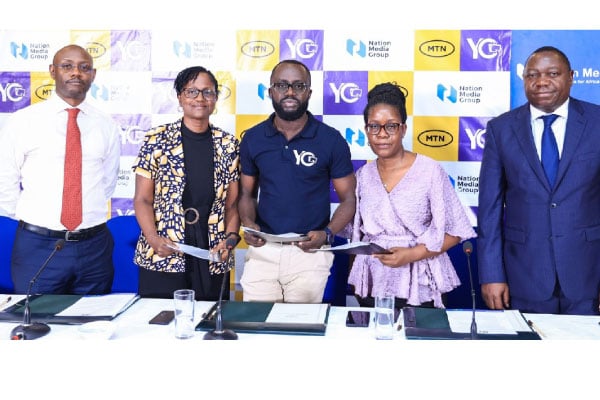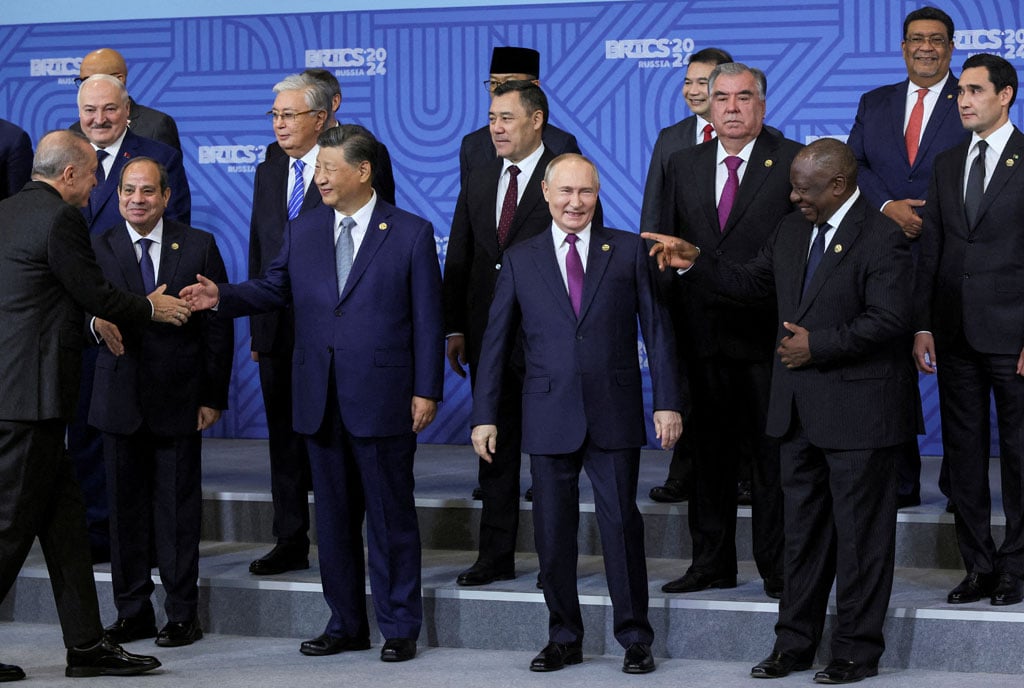New media is loud: We must listen

From left to right: Mr Sam Barata, the NMG General Manager Commercial; Ms Susan Nsibirwa, the Managing Director of NMG-U; Mr Aggrey Mugisha, the CEO of YO TV; Ms Susan Kayemba, the Senior Manager of Digital Services at MTN Uganda, and Mr Johnson Omolo, the General Manager of NTV and Spark TV, in Kampala on March 6, 2024. Photo/Duncan Kabagambe
What you need to know:
- Media houses invest heavily in content creation, crafting programmes with care and precision, only to have these air to increasingly disengaged audiences, distracted by their mobile devices, or caught up in daily routines.
Recently, I had a meeting at one of the restaurants on Kampala Road. As I glanced around the room, my eyes landed on a television set mounted to the wall broadcasting a live programme from one of the local stations. Despite the bright screen and vivid visuals, clients remained largely indifferent.
For hours, most were engrossed in their mobile phones or engaged in animated conversations, seemingly unaware of the content playing out on the TV. The irony wasn’t lost on me. Media houses invest heavily in content creation, crafting programmes with care and precision, only to have these air to increasingly disengaged audiences, distracted by their mobile devices, or caught up in daily routines.
Reflecting on this shift, I couldn't help but think back to a time when traditional media was the unchallenged source of information. When major announcements or events occurred, we all looked to radio, television, or newspapers. Today the space is rapidly evolving into everything digital. The inability to adapt fast has recently seen most of our traditional media houses shut down or downsize operations to stay afloat.
The advent of smartphones means that anyone can be among the first to hear breaking news, delivered directly to their device. This shift poses a significant challenge for traditional media. Yet even those who venture into the digital space often replicate old models, simply transferring traditional programming to digital platforms—a strategy that falls short of expectations in this new era.
Modern audiences no longer wish to organise their lives around broadcast schedules. They demand content that fits their lifestyles, content they can consume conveniently on the go. The rise of streaming services and the explosion of social media platforms have not only diversified content but also democratised its creation.
Today, everyone is a potential content creator. This has led to a surge in spending on mobile video ads, as statistics indicate mobile devices are now the primary tools for accessing video content. According to the Uganda Communications Commission, internet traffic in Uganda surged by 51 percent year-on-year in the 12 months ending March 2023, with data consumption rising from 91.4 million GBs to 138.5 million GBs.
This growth spurred the average internet usage per subscriber to climb from 3.88 GBs to 5.10 GBs. Recognising this digital boom, telecom companies have already formed strategic alliances with digital platforms to exploit the mutual benefits of this transformation. To thrive in this environment, media houses must quickly shift their focus.
The future lies in partnerships with established digital platforms, which offer ready-made infrastructures and extensive user bases. These collaborations can help traditional media companies not only adapt to but also capitalise on new content consumption trends.
By leveraging these platforms, traditional media can focus on what they do best—creating high-quality content—while reducing the costs and complexities associated with developing their own digital spaces. Additionally, the digital space resolves one of the traditional media's long-standing challenges: measuring engagement.
Digital platforms, with their ability to collect and analyse viewer data, offer insights that can guide content creation and marketing strategies more effectively than ever before. This data-driven approach, already utilised by social media giants such as TikTok, Netflix, and YouTube, can be harnessed to meet the specific needs of our local audiences.I call upon media houses to embrace innovative ways of content distribution.
By embracing collaboration with digital platforms, traditional media houses can enhance their content delivery, target niche audiences more effectively, and refine their market positioning. Advertisers, too, stand to gain by being able to more precisely target their efforts.
The viewer may no longer be fixated on the television screen, but they are certainly consuming content—just in different, more dynamic ways. The signal from new media is loud and clear. It’s time we listen.
Aggrey Mugisha is the CEO of AI Bayan Media



